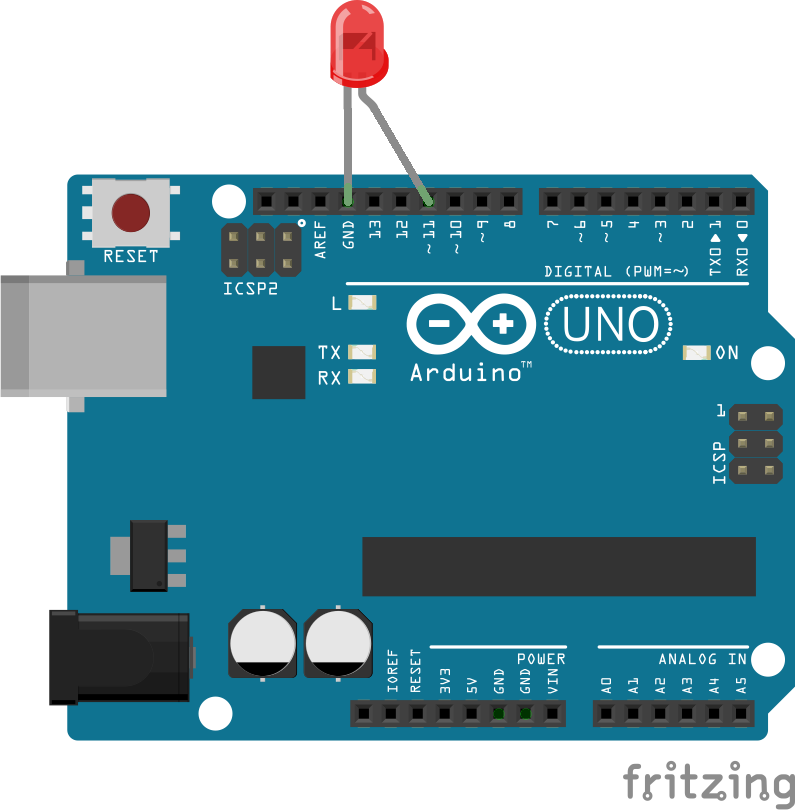LED pulse example that incrementally fades an LED brighter and brighter. Requires LED on pin that supports PWM (usually denoted by ~).
LED on pin 11 (Arduino UNO)
LED inserted directly into pin 11.

Fritzing diagram: led-11-pwm.fzz
Run this example from the command line with:
node eg/led-pulse-animation.js
const { Board, Led } = require("johnny-five");
const board = new Board();
board.on("ready", () => {
// Create a standard `led` component
// on a valid pwm pin
const led = new Led(11);
// Instead of passing a time and rate, you can
// pass any valid Animation() segment opts object
// https://github.com/rwaldron/johnny-five/wiki/Animation#segment-properties
led.pulse({
easing: "linear",
duration: 3000,
cuePoints: [0, 0.2, 0.4, 0.6, 0.8, 1],
keyFrames: [0, 10, 0, 50, 0, 255],
onstop() {
console.log("Animation stopped");
}
});
// Stop and turn off the led pulse loop after
// 12 seconds (shown in ms)
board.wait(12000, () => {
// stop() terminates the interval
// off() shuts the led off
led.stop().off();
});
});
